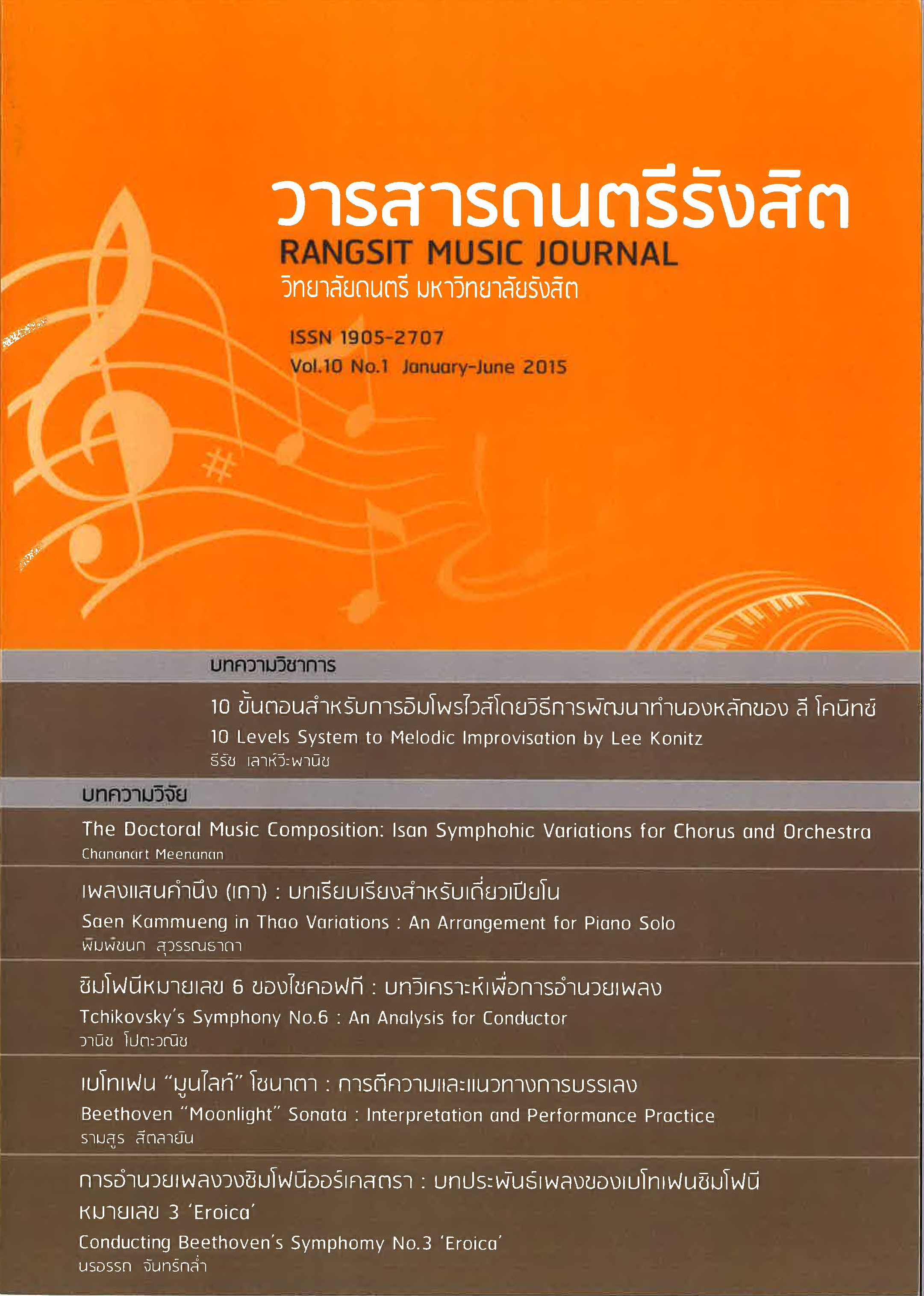Beethoven "Moonlight" Sonata: Interpretation and Performance Practice
Abstract
Piano Sonata Op. 27 No. 2 in C# Minor by Ludwig van Beethoven - usually known as the "Moonlight Sonata" - is not only one of the most famous Beethoven's piano works but also one of the most popular classical compositions. However, the title "Moonlight" Sonata or Mondschein sonate as described by German poet and music critic Ludwig Rellstab was neither suggested nor approved by Beethoven. This famous title actually appeared for the first time in 1832, five years after Beethoven's death. Listeners and even performers usually interpret this work as a reflection of moonlight on the lake, suggested a delicate and sentimental character. After some research, however, an author found that the original idea of this work had no relationship with the concept of moonlight but came from the death scene of Mozart opera Don Giovanni. Therefore, performers could perform this work with darker feeling and more intensity. Besides an interpretation issue, this study examined Beethoven's pedal mark and suggested different ways of using a pedal to imitate an effect of Beethoven's original forte-piano. Other general performance practice issues are discussed.
References
2. Cooper, Barry, ed. The Beethoven Compendium: A Guide to Beethoven's Life and Music. London: Thames and Hudson, 1991.
3. Gordon, Stewart. A History of Keyboard Literature: Music for the Piano and Its Forerunners. Belmont, CA: Schirmer, 1996.
4. Plantinga, Leon. Beethoven's Concertos: History Style Performance. New York: Norton, 1999.
5. Rosenblum, Sandra P. Performance Practices in Classic Piano Music. Bloomington, IN: Indiana University Press, 1988.
6. Schiff, Andras. "Andras Schiff: the lectures." The Guardian. Accessed April 15, 2014. http://www.theguardian.com/music/classical/page/0,1943867,00.html.
7. Stanley, Glenn, ed. The Cambridge Companion to Beethoven. Cambridge: Cambridge University Press, 2000.
Downloads
Published
How to Cite
Issue
Section
License
กองบรรณาธิการฯ สงวนสิทธิ์ในการพิจารณาและตอบรับการตีพิมพ์ ความรับผิดชอบใดๆ เกี่ยวกับเนื้อหาและความคิดเห็นในบทความเป็นของผู้เขียนต่อบทความนั้นๆ กองบรรณาธิการฯ ไม่ต้องรับผิดชอบ



